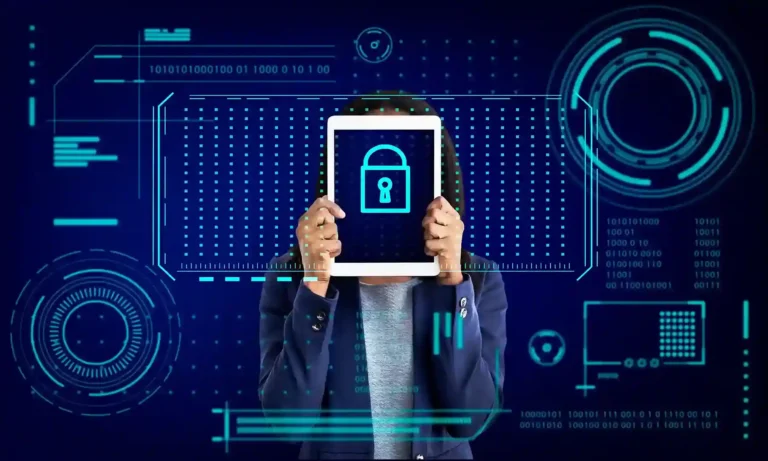Cyber Security Attacks In today’s interconnected world, cybersecurity is paramount. As we rely more on digital technology, the importance of safeguarding our online presence becomes increasingly crucial. This article explores the fundamental concepts of cybersecurity and delves into various types of cybersecurity threats that individuals and organizations face.
WHAT IS CYBERSECURITY?
Cybersecurity encompasses a range of practices, technologies, and processes designed to protect computer systems, networks, and data from unauthorized access, attacks, and damage. It revolves around ensuring the confidentiality, integrity, and availability of information in the digital realm. Effective cybersecurity attacks involves a combination of robust technology, security policies, and user awareness.
Technology, the importance of safeguarding our online presence becomes increasingly crucial. This cyber security attacks article explores the fundamental concepts of cybersecurity and delves into various types of cyber Security attacks threats that individuals and organizations face.
IMPORTANCE OF CYBERSECURITY
Cybersecurity is crucial for several reasons, here is a list:
1. Protecting Sensitive Data:
Shield’s personal and financial information
Secures trade secrets and corporate data
Builds trust with customers
2. Preventing Financial Losses:
Stops financial theft and fraud
Prevents ransom payments to cyber criminals
Preserves business revenue
3. Safeguarding Critical Infrastructure:
Ensures the smooth operation of essential services like power and healthcare
Prevents disruptions in transportation and communication networks
4. Preserving National Security:
Protects military and defense networks
Guards against cyber espionage and cyber-terrorism
Defends against attacks on government databases
5. Supporting Digital Innovation:
Encourages the adoption of emerging technologies
Facilitates secure online transactions
Enables the development of secure online platforms and applications
6. Preserving Privacy
Safeguards online communications and personal files
Prevents unauthorized access to medical and financial records
Maintains confidentiality on social media and online platforms
COMMON TYPES OF CYBERSECURITY ATTACKS
Here are some common types of cybersecurity attacks:
Phishing Attacks
Phishing attacks involve tricking individuals into divulging sensitive information such as passwords and credit card numbers. Attackers often impersonate trustworthy entities via email, social media, or websites, leading unsuspecting victims to disclose confidential data.
Malware Attacks
Malware, short for malicious software, includes viruses, worms, Trojans, and ransomware. These programs are designed to infiltrate systems, steal data, or cause disruption. Malware can spread through infected files, software downloads, or malicious links.
Denial-of-Service (DoS) and Distributed Denial-of-Service (DDoS) Attacks
DoS attacks overwhelm a target system with traffic, causing it to become slow or unresponsive. DDoS attacks, a more sophisticated version, utilize multiple sources to flood the target, making it difficult to mitigate the attack and maintain service availability.
Man-in-the-Middle (MitM) Attacks
MitM attacks involve intercepting communication between two parties without their knowledge. Attackers can eavesdrop on sensitive information, modify messages, or impersonate one of the parties, leading to data theft or unauthorized access.
SQL Injection and Cross-Site Scripting (XSS) Attacks
SQL injection attacks target databases by inserting malicious SQL code into input fields. XSS attacks, on the other hand, inject malicious scripts into web pages viewed by users, compromising their data or session cookies.
CYBERSECURITY BEST PRACTICES
Here are some of the best cybersecurity practices:
Strong Password Policies
Implementing strong password policies and encouraging the use of unique, complex passwords for each account can significantly enhance security. Two-factor authentication adds a layer of protection.
Regular Software Updates and Patch Management
Keeping software and operating systems up-to-date is vital. Software updates often contain security patches that address vulnerabilities, reducing the risk of exploitation by cybercriminals.
Employee Training and Awareness
Educating employees about cybersecurity threats and best practices is essential. Regular training sessions and simulated phishing exercises can help employees recognize and avoid potential threats, enhancing the overall security posture of an organization.
Data Encryption
Encryption converts data into a code to prevent unauthorized access. Implement encryption protocols such as SSL/TLS for website communications and BitLocker/FileVault for data at rest. This ensures that even if data is intercepted, it remains unreadable without the decryption key.
Secure Wi-Fi Networks
Change default router passwords and use strong, unique passwords. Enable WPA3 encryption for Wi-Fi networks, making it difficult for unauthorized users to access your network. Avoid using public Wi-Fi for sensitive activities, as these networks are often less secure and susceptible to interception.
Implement Firewalls and Security Software
Use firewalls to block unauthorized access to your network. Install reputable antivirus and anti-malware software to detect and remove malicious programs.
Regular Security Audits
Conduct regular security audits and vulnerability assessments to identify weaknesses in your systems and networks. Address these vulnerabilities promptly to prevent exploitation. Penetration testing, ethical hacking, and automated scanning tools can help identify potential security gaps.
Compliance with Regulations
Understand the regulatory requirements relevant to your industry. Regulations such as GDPR, HIPAA, and PCI DSS mandate specific cybersecurity measures. Complying with these regulations not only avoids legal consequences but also ensures the security and privacy of customer data.
CONCLUSION
The ever-expanding digital landscape ensures that the demand for cyber security attacks professionals will continue to rise, making it a field ripe with opportunities for those seeking a rewarding career. In this competitive arena, choosing the right institute can be the defining factor in your success story. Quality Thought stands out as the premier choice for aspiring cybersecurity experts.
Learn more about our other courses Hadoop Admin Training | Appium Training | BI Reporting Tools Training | Google Ads Training
Register Now To Our Courses






